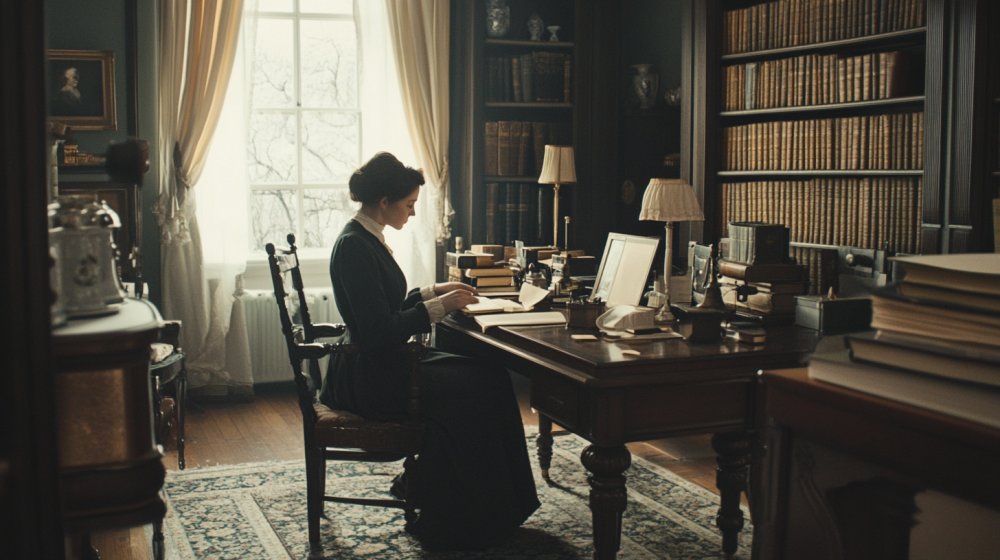Point Heating

In the summer, I put a fan on my desk. This is point cooling. Instead of cooling the entire room, I cool just the point that matters to me, at a given moment. The flip side is point heating, which is only more uncommon — not more odd.
Ever since I read about British architect John Soane’s home heating experiments in the 1820s, I have been awed by his goals. He had installed several cutting-edge central heating systems, which were, in the 1820s, the domain of hobbyists. He made diligent recordings of the temperatures achieved in various rooms. In the parlour, 11-13°C was the goal.
History
Maintaining summer temperatures inside a house throughout winter is recent phenomenon. Indoor winter temperatures were three degrees lower in the sixties and seventies, and they drop as one goes back in time.



The pictures above were taken in a museum house in Deerfield, Massachusetts. The last occupant of this attic room was an eighty-year-old woman in the 19th century. The walls are not insulated. The windows are of single-paned glass. On the other side of these ceiling planks are roof tiles. There is no furnace in this room. It is passively heated by the room below. The average January low for this town is -18°.
Houses built in the 18th century, like this one, invite us to imagine the temperatures endured by our ancestors —even our very elderly ancestors. Fortunately, they do not have the opportunity to imagine us. They would consider us pampered poodles.
Adaptation
The first note I make is that I fared better at 14° than at 16°. This, I believe, is due to the length of time I had spent in the cold when 14° finally arrived. The body seemingly adapts.
This can be said another way: your intuition about the cold you can comfortably bear is wrong.
Heat Source
My second note is that wearing a sweater indoors is not enough. It merely slows the loss of heat; it does not prevent the loss. Sitting at a desk for long periods of time lowers metabolism. There must be a heat source.
I began with a hot water bottle inside my sweater. This worked very well, for about a week. I now have an electric heating pad draped over the backrest of my chair.
It takes an hour to heat a cold bed with one’s body, and it is a disagreeable hour. It is preferable to preheat the bed with hot water bottles or an electric blanket. A dense mattress, like a futon, retains heat quite well on its own, so once it is warm, external heat is not needed.
Exercise
Sitting still for eight hours was never anything our bodies were designed to do. One must take frequent exercise breaks, in summer as well as in winter, but in winter, avoiding exercise is more uncomfortable than the exercise itself.
Fingers
How to keep the fingers warm when gloves are not possible (e.g. typing)?
My trick is to put pocket warmers in the sleeves of my coat. They make my forearms overly warm. Then the fingers act as radiators. It is a relief to be able to cool off.
Chilblains
It is tempting to put on a second pair of socks and not worry further about feet. But these are in contact with a surface that conducts heat better than air.
If you go through many cold winters like this, your feet experience long periods of vasoconstriction. Nerves die and the result is painful itching and swelling. Chilblains (Old English: cold swelling) is a medical condition that is common to people who live in cold houses. It isn’t pleasant and it can be avoided by keeping the feet in contact with heat instead of cold.
I put an electric heating pad on the floor before my chair.
Second Sleep
I learned a few years ago that the eight hour sleep period is an artefact of industrialisation. For most of human history, people have slept in two four hour shifts, with a 90-120 minute break around midnight. It is the very phenomenon that makes midnight mid.
In the winter, people went to bed early, say, around eight PM, and awoke at midnight to tend to the fire, to chat, sew, or carry out other small fire-side tasks. Then around two AM, they returned to sleep, and awoke at six.
In retrospect, it seems obvious that eight hours is too long to leave a fire unattended, and that midnight wakefulness is an adaptation. Remember, homo sapiens have never lived without fire; their forerunners had it. On the scale of human history, the eight-hour sleep session is a recent fad.
I find that in a cool room, I become sleepy quite early, and then experience a brief period of clear-headed wakefulness around midnight. I am, in fact, writing these words at two AM.
Future proof
My experience with 12° in winter is not more unpleasant than my experience with 36° in summer. It’s just an unpleasantness to be managed.
Civilisation’s peak is already behind us. From now on, human existence shall be some combination of climate catastrophies, capitalism, and fascism. It’s best to work out your subcivilisation lifestyle while the luxury of experimentation still exists.
